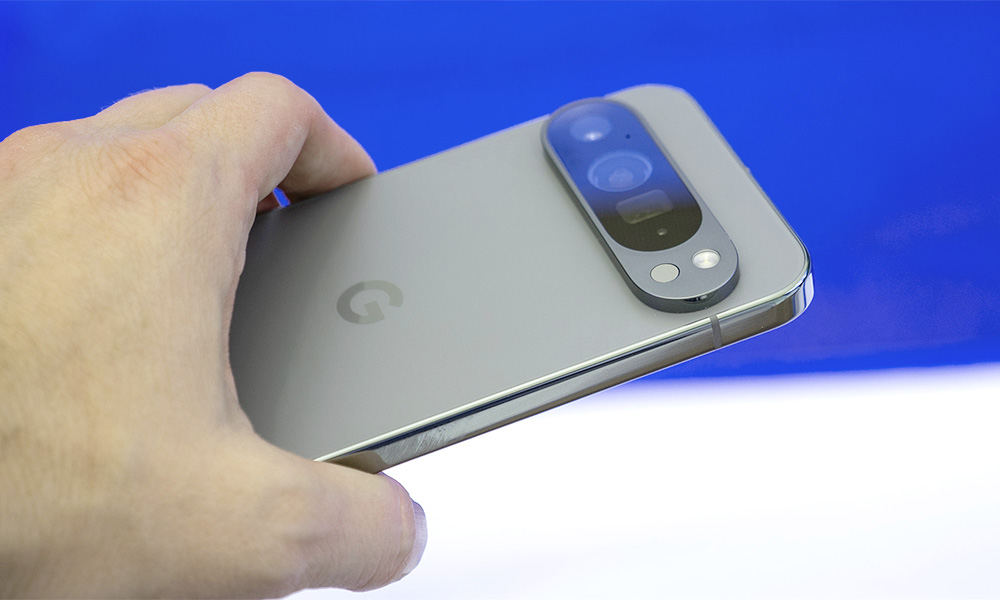Google is getting ready to release its next flagship smartphone, and the smartphone market is humming with excitement. The Google Pixel 10 Pro represents a significant leap forward in mobile technology, promising groundbreaking improvements in photography, performance, and artificial intelligence capabilities.
Release Date and Availability
Google is going to officially launch the Pixel 10 series at their upcoming event on August 20, 2025. The actual release date is expected to be August 28, 2025, following Google’s typical pattern of announcement followed by retail availability.
The timing aligns perfectly with Google’s annual smartphone refresh cycle, positioning the device to compete directly with Apple’s iPhone lineup and Samsung’s Galaxy S series for the crucial holiday shopping season.
Design Evolution and Display Technology
The Pixel 10 Pro has a smart design that makes Google’s special camera bar look even better. The device features a 6.3-inch display protected by Corning Gorilla Glass Victus 2, which offers strong protection without making the phone feel cheap or low quality.
The screen utilizes AMOLED technology with support for 120Hz refresh rates through LTPO (Low Temperature Polycrystalline Oxide) technology and peak brightness reaching up to 3,000 nits. This “Super Actua display” technology promises exceptional outdoor visibility and smooth scrolling experiences, making it ideal for everything from gaming to professional content creation.
The design language maintains Google’s clean, minimalist approach while incorporating subtle refinements that enhance both aesthetics and functionality. The camera module continues to be a defining feature, housing the advanced photography system that has become synonymous with the Pixel brand.
Tensor G5: A Performance Revolution
The Google Pixel 10 Pro is based on the ground-breaking Tensor G5 chipset, a significant improvement over previous generations. Google is blending its proprietary designs including the TPU, DSP, memory compressor, and audio processor with select external technologies, creating a more balanced and powerful processing solution.
Such “gaming” features are usually excluded from Google chips, but the new GPU supports ray tracing. This addition signals Google’s commitment to providing a more well-rounded flagship experience that appeals to gaming enthusiasts and power users alike.
The Tensor G5 processor is clearly visible on the motherboard, suggesting that the system might have improvements in hardware reliability and cooling performance. These thermal management improvements address one of the primary concerns with previous Tensor generations, promising sustained performance during intensive tasks.
However, there are some notable omissions. The Google Pixel 10 will not include a vapor chamber and will also not support WiFi 7, even though the Pixel 9 does have WiFi 7 support. This decision may disappoint some users who expected these premium features in a flagship device.
Camera System: AI Photography Redefined
The Google Pixel 10 Pro’s camera is its best and most important feature. There should be a 50MP primary camera, a 42MP front-facing camera, a 48MP ultra-wide, and a 48MP telephoto with 5x optical zoom. The true magic occurs in the software processing, even though these specs are similar to those of the Pixel 9 series.
Google is not just making small changes to the Image Signal Processor (ISP) made by Samsung. Instead, they are using a completely designed ISP that they built themselves for the camera. This represents a significant technological advancement, allowing Google to have complete control over image processing algorithms and potentially delivering unprecedented photography capabilities.

Features like Best Take or Magic Editor enable group images and fast adjustments for regular users, while features like HDR+ and Night Sight help take well-balanced pictures even in challenging lighting conditions. The integration of AI-powered photography features continues to set Pixel devices apart from competitors, making professional-quality photography accessible to everyone.
The telephoto system deserves special attention, with rumors suggesting enhanced zoom capabilities that could rival dedicated camera equipment. The combination of optical zoom, computational photography, and AI enhancement promises to deliver exceptional results across all focal lengths.
Memory, Storage, and Battery Life
The Google Pixel 10 Pro comes with 16GB of RAM and up to 1TB of storage, making it easy to handle multiple tasks at once and giving you lots of space for photos, videos, and apps. This generous RAM allocation is particularly important for AI processing tasks and future-proofing the device for demanding applications.
The device houses a 4,870mAh battery, providing all-day usage for most users. Charging speeds are getting an improvement to 29W wired charging and 15W wireless charging speeds thanks to Qi2 support. While not the fastest charging speeds available, they represent a practical balance between charging convenience and battery longevity.
The inclusion of Qi2 wireless charging brings improved efficiency and better alignment compared to traditional wireless charging solutions, making the charging experience more reliable and user-friendly.
Software and AI Integration
The Google Pixel 10 Pro will launch with the latest Android version, featuring deep integration with Google’s AI services and exclusive Pixel features. More complicated on-device processing is made possible by the Tensor G5’s improved AI capabilities, which reduce the need for cloud services for many AI-powered features.
Expect significant improvements in voice recognition, real-time translation, and computational photography. The combination of increased processing power and Google’s software expertise creates opportunities for innovative features that leverage machine learning in practical, user-friendly ways.
The device will also benefit from Google’s commitment to long-term software support, with guaranteed Android updates and security patches for several years after launch.
Pricing and Storage Options
Since it is still reasonably priced compared to its predecessor, the Google Pixel 10 Pro is available to a wider spectrum of consumers. The device starts at $999 for the 128GB model in the US and $1,349 in Canada, offering multiple storage configurations to suit different needs and budgets.
| Storage | US Price | Canadian Price |
| 128GB | $999 | $1,349 |
| 256GB | $1,099 | $1,479 |
| 512GB | $1,219 | $1,619 |
| 1TB | $1,339 | $1,759 |
Google’s pricing policy is similar to that of the Pixel 9 series, with all storage configurations having the same price. This approach demonstrates Google’s commitment to providing consistent value while avoiding the price increases that have affected other flagship smartphones in recent years.
The 1TB storage option represents the highest capacity ever offered in a Pixel device, catering to professional users and content creators who require extensive local storage for photos, videos, and applications. The generous storage options eliminate concerns about running out of space, particularly important given the advanced camera capabilities and AI features that generate larger file sizes.
Google continues to bundle additional services with purchases, including six months of AI Pro and Fitbit Premium, as well as three months of YouTube Premium, adding significant value to the overall package.
Market Position and Competition
The Google Pixel 10 Pro is entering a very crowded market for top-end smartphones, competing directly with Apple’s iPhone Pro series, Samsung’s Galaxy S series, and new players from Chinese companies. Google’s strategy focuses on differentiation through AI capabilities, photography excellence, and clean Android experience rather than competing solely on specifications.
For the market to work well, having the right pricing plan is really important. Google needs to balance premium positioning with competitive pricing to attract users from established ecosystems. The value proposition lies in the unique combination of hardware capabilities, software optimization, and Google service integration.
Innovation and Future Outlook
The Google Pixel 10 Pro shows how committed Google is to creating new and better mobile technology, not just making small changes. The custom ISP, enhanced Tensor G5 processor, and advanced AI capabilities position the device as a technology showcase rather than just another smartphone.
The focus on computational photography and AI-driven features aligns with current industry trends while establishing Google’s unique position in the market. The device serves as a platform for demonstrating Google’s vision of mobile computing, where artificial intelligence enhances every aspect of the user experience.
Final Thoughts
The Google Pixel 10 Pro is expected to be a strong flagship phone that makes important improvements in the smartphone world. While it may not lead in every specification category, the combination of innovative AI features, exceptional camera capabilities, and Google’s software expertise creates a unique value proposition.
The success of the device will ultimately depend on execution, pricing, and market reception. However, the early indications suggest that Google has created a device that pushes the boundaries of what’s possible in mobile photography and AI integration, making it a worthy consideration for anyone seeking a premium Android experience with cutting-edge technology.


